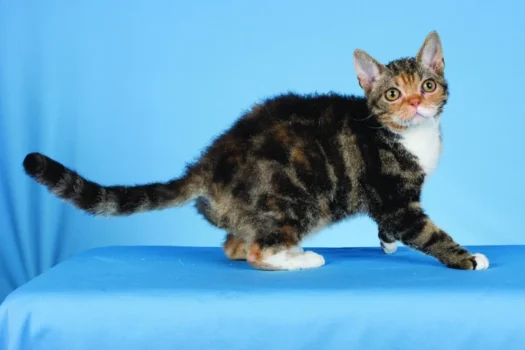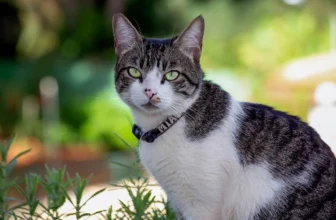Have you ever wondered how breeders choose the perfect pair for American Wirehairs? It’s a process that involves careful consideration of many factors including compatibility, health, and genetics. Choosing the right parents is crucial not only for the health and well-being of the kittens but also for the long-term health of the breed. In this article, we’ll break down the steps involved in choosing a suitable breeding pair for American Wirehairs and provide tips on preparing for successful breeding and healthy litters. So let’s dive in and explore the world of cat breeding!
Why Choose Carefully?
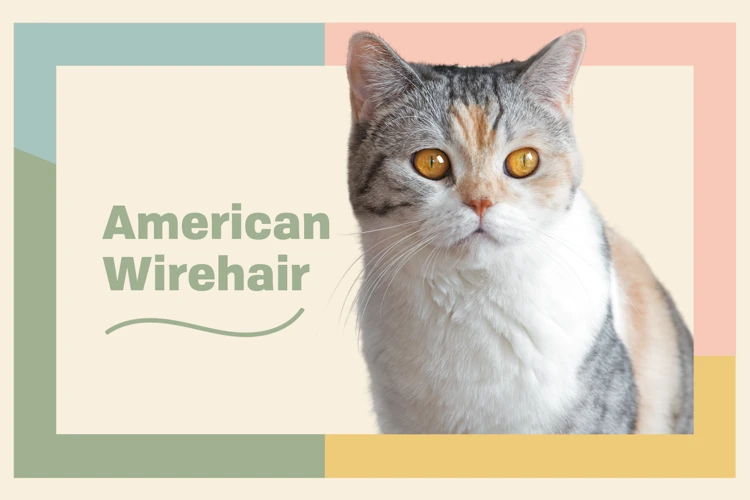
Choosing the right breeding pair is one of the most important decisions a cat breeder can make. It is crucial to carefully evaluate a potential breeding pair to ensure they are compatible physically, temperamentally, and genetically. Breeding cats that are incompatible or not suited for each other can lead to unhealthy kittens and negatively impact the breed’s overall health and characteristics. In this article, we will explore the reasons why it is essential to choose breeding pairs carefully, including the need to keep the breed healthy and improve its characteristics. We will also go through practical steps to evaluate a potential breeding pair’s compatibility and health, as well as preparing for breeding. If you’re interested in learning more about genetics and breeding Wirehairs, check out our article on genetic testing and breeding American Wirehairs.
Keep the Breed Healthy
When choosing a breeding pair for American Wirehairs, it’s important to keep the breed healthy. This means evaluating the health and genetics of potential breeding cats, as well as considering their compatibility and evaluating their breeding history. By selecting healthy and compatible cats with a good breeding history, breeders help to ensure that the American Wirehair breed continues to thrive.
One important consideration when choosing a breeding pair is the risk of genetic health issues. Inbreeding and linebreeding (breeding related cats) can increase the risk of genetic health problems in offspring. It’s important to choose breeding cats that are not closely related. When researching potential breeding cats, look at their pedigrees to ensure that they are not related within three generations.
In addition to avoiding inbreeding and linebreeding, pre-breeding health tests should be conducted to ensure that the cats are healthy and free from common genetic health problems. Common health tests for American Wirehairs include testing for hypertrophic cardiomyopathy (HCM) and polycystic kidney disease (PKD). By testing for these health conditions before breeding, breeders can reduce the risk of these issues appearing in offspring.
Another way to keep the breed healthy is to prioritize early socialization. Proper socialization can impact both the health and temperament of American Wirehair kittens. By exposing kittens to various stimuli at a young age, such as different people, sounds, and environments, breeders can ensure they grow up to be well-adjusted and healthy cats. For more information on the importance of early socialization, check out our article on the impact of early socialization on American Wirehair kittens’ health and temperament.
Finally, evaluating a cat’s breeding history can provide insight into how healthy their offspring might be. Look for cats that have produced healthy kittens in the past, with no history of genetic health problems. By choosing cats with a track record of producing healthy kittens, breeders can help ensure that future generations of American Wirehairs are healthy and thriving.
Keeping the breed healthy is essential when choosing a breeding pair for American Wirehairs. By avoiding inbreeding and linebreeding, conducting pre-breeding health tests, prioritizing early socialization, and evaluating breeding history, breeders can help ensure that the American Wirehair breed remains healthy and strong for generations to come. For more information on pre-breeding health tests, check out our article on pre-breeding health tests for American Wirehairs.
Improve the Breed
When choosing a breeding pair for American Wirehairs, one of the key reasons to be careful with your selection is to improve the breed. This involves selecting cats that possess desirable traits and working towards enhancing and refining those traits in future generations.
To accomplish this, it is important to take note of specific traits that the breed standard emphasizes, such as coat texture, color, and eyes. You may also want to consider other traits that are important to you, such as personality or intelligence. Making a list of desirable traits can help you in your search for suitable breeding cats.
In addition to identifying desirable traits, breeders may also consider using inbreeding or linebreeding methods to enhance and concentrate desirable traits. Inbreeding involves mating cats that are closely related, while linebreeding involves mating cats that are more distantly related but share a common ancestor. These methods require careful consideration to avoid breeding cats that carry undesirable recessive genes or genetic abnormalities.
To ensure the health and well-being of future generations, it is important to research the bloodlines of potential breeding cats. This can help you identify any genetic issues that may be present and avoid breeding cats with a high risk of producing offspring with genetic defects.
By carefully selecting breeding pairs that possess desirable traits and researching their bloodlines, breeders can work towards creating healthier, more refined American Wirehair kittens that meet the breed standard.
Compatibility
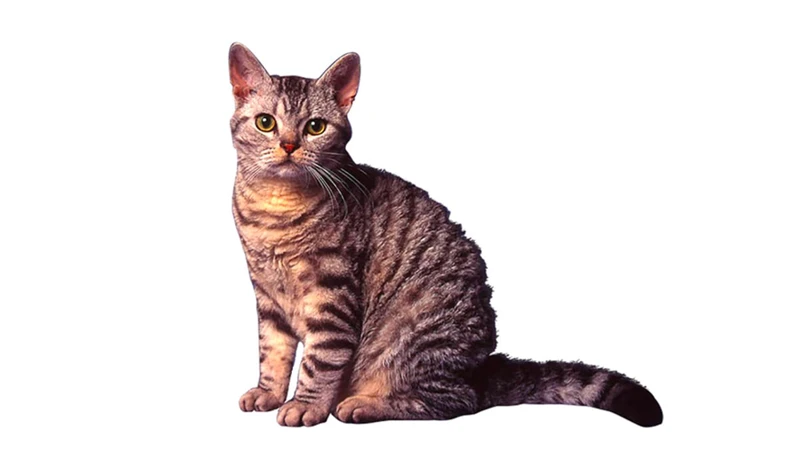
When it comes to breeding American Wirehairs, compatibility is of the utmost importance. Breeding pairs must be carefully chosen to ensure healthy, high-quality offspring. This means assessing temperament, physical traits, and bloodline compatibility. In this section, we will explore the different aspects of compatibility that breeders must consider before pairing American Wirehairs together. We will also discuss the crucial role compatibility plays in maintaining the health of the breed and improving it for the future.
Assessing Temperament
When choosing a suitable breeding pair for American Wirehairs, assessing temperament is crucial. This will help determine if the cats have compatible personalities that will result in healthy offspring with good temperaments. When evaluating temperament, there are several factors to consider. These include:
| Factor | Description |
|---|---|
| Aggression | American Wirehairs should not display any aggression towards humans or other cats. If a cat shows signs of aggression, it may not be suitable for breeding. |
| Sociability | Cats that are friendly and enjoy being around humans are more likely to produce kittens that are easy to handle and socialize. On the other hand, cats that are aloof or anxious may produce kittens that are harder to socialize. |
| Activity Level | American Wirehairs are known to be playful and active. It’s important to evaluate the activity level of the breeding pair to ensure that they have similar energy levels. This will help prevent any conflicts or behavioral issues. |
| Health | Cats that are in good health are more likely to have good temperaments and produce healthy offspring. It’s important to evaluate the health of the breeding pair, including their vaccination and parasite prevention history, before breeding. |
It’s important to note that inbreeding and linebreeding can greatly influence temperament. Breeding cats that are closely related can increase the risk of genetic defects, which can lead to behavioral issues. It’s important to carefully evaluate the bloodline compatibility of the breeding pair. For more information on inbreeding and linebreeding among American Wirehairs, check out our article on inbreeding and linebreeding in American Wirehairs.
Evaluating Physical Traits
When choosing a breeding pair for American Wirehairs, evaluating physical traits is crucial. These traits should complement each other, resulting in kittens that are healthy, strong, and meet breed standards. Here are some physical traits to consider:
- Size and Proportion: Make sure the male and female are of similar size and proportion. This is important for safe and easy breeding, as well as for preventing birthing complications.
- Head: Look for a well-proportioned head, with a strong muzzle and large ears. The head should be round and wide, with prominent cheekbones.
- Coat: The American Wirehair’s coat is thick and dense, with a wiry texture. Look for a pair with similar coat quality, as well as a healthy and shiny coat.
- Color: The breed’s coat comes in a variety of colors, including white, black, blue, and red. Choose a pair that have matching or complementary colors.
- Body: The body should be muscular and compact, with a broad chest and strong back. Check for any abnormalities, such as a twisted tail or crooked legs, that could be passed down to offspring.
- Limbs: The American Wirehair’s legs are short and strong, with large paws. Make sure the breeding pair have similar limb structure and proportions for a balanced appearance.
- Eyes: The eyes should be large, round, and well-set. They come in various colors, and the pair should have similar eye shape and color.
Evaluating physical traits may seem straightforward, but it requires careful observation and attention to detail. It’s important to note that physical appearance is just one aspect of a breeding pair’s suitability. It’s always best to work with a reputable breeder who follows ethical breeding practices and prioritizes the health and well-being of the cats.
Bloodline Compatibility
When it comes to breeding American Wirehairs, bloodline compatibility is another crucial factor to consider. Combining bloodlines can help improve the breed by strengthening desirable traits and minimizing the chances of passing on genetic health issues. Here are some important points to keep in mind when evaluating bloodline compatibility:
- Research bloodlines: Before choosing a breeding pair, it is important to research the history of their bloodlines. Look for any patterns of genetic health issues or traits that may be too dominant or recessive.
- Consider diversity: Inbreeding can increase the likelihood of genetic health issues and reduce genetic diversity. It is essential to choose breeding pairs with varied bloodlines to minimize these risks.
- Evaluate pedigrees: Pedigrees can provide valuable information on the history of a cat’s bloodlines. Look for cats with strong pedigrees that have been consistently healthy and have produced desirable traits in previous litters.
- Assess offspring: If you are breeding cats from your own cattery, it is important to assess the quality of previous litters. Look for cats with desirable traits and good health that can be used for future breeding.
Bloodline compatibility is an important factor in choosing a suitable breeding pair for American Wirehairs. By carefully evaluating bloodlines, you can help improve the breed by minimizing the risks associated with genetic health issues and strengthening desirable traits.
Evaluating Health and Genetics
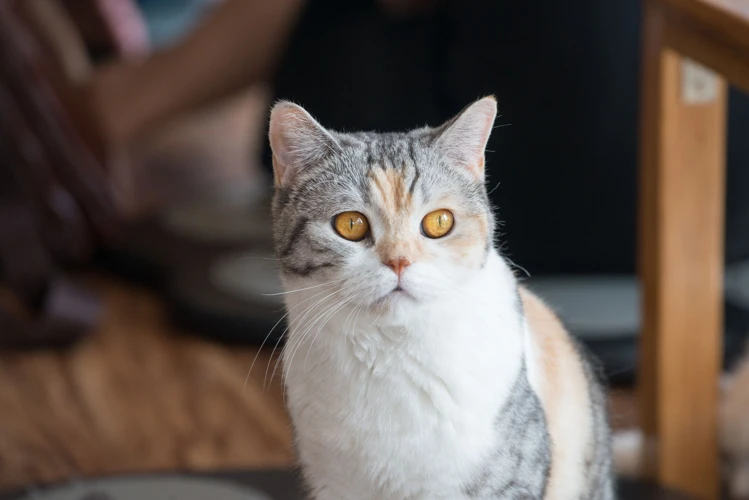
When it comes to breeding American Wirehairs, it is crucial to evaluate the health and genetic histories of potential breeding pairs. This step is important to ensure that the future litter of kittens will be healthy and free from genetic diseases. Proper evaluation of the cats’ health and genetics will also help to maintain and improve the breed’s quality over time. In this section, we will discuss the essential considerations when evaluating potential breeding pairs for American Wirehairs. From testing for common health issues to assessing breeding history, we will cover all aspects of evaluating health and genetics.
Testing for Common Health Issues
It’s crucial to test potential breeding pairs for any common health issues that may be passed on to their offspring. Here are some of the most important health tests to consider:
- Hip Dysplasia: It’s a genetic condition where the hip joints don’t develop properly. This can cause arthritis and severe pain. The Orthopedic Foundation for Animals (OFA) evaluates hips through radiographs. With an OFA score of good or excellent, the risk of hip dysplasia in the offspring is decreased.
- Feline Hypertrophic Cardiomyopathy: It’s a hereditary heart disease that can cause sudden death. Testing is available through several laboratories, and the results must be interpreted by your veterinarian. Avoid breeding cats with a positive result.
- Feline Leukemia Virus (FeLV) and Feline Immunodeficiency Virus (FIV): These are contagious diseases that weaken the immune system and increase the risk of infections and cancers. Testing should be done before breeding to avoid transmitting them to the kittens.
- Polycystic Kidney Disease (PKD): It’s a genetic disease that causes fluid-filled cysts to form in the kidneys. Testing can be done through ultrasound or genetic testing. Breeding cats with PKD puts the offspring at risk.
- Progressive Retinal Atrophy (PRA): It’s a degenerative eye disease that can lead to blindness. The mode of inheritance remains unclear, but testing can be done through genetic testing. Avoid breeding cats with a positive result.
Keep in mind that not all health issues can be tested for, and some may not appear until later in the cat’s life. For this reason, it’s important to choose cats with a clean bill of health history and regular vet checkups. By doing so, you’ll reduce the risk of passing on hereditary health problems to the kittens.
Evaluating Genetics
When choosing a suitable breeding pair for American Wirehairs, evaluating genetics is a crucial step in ensuring the health and well-being of the kittens. It involves assessing the genes passed down from both parents, including unhealthy or undesirable traits that should be avoided.
One way to evaluate genetics is to obtain a comprehensive genetic test from a reputable laboratory. This test will assess the pair’s DNA markers for common genetic diseases such as Polycystic Kidney Disease (PKD), hip dysplasia, and hypertrophic cardiomyopathy. This information can be used to determine if either parent carries any traits that may be harmful to their offspring.
Another way to evaluate genetics is to examine the family history of both parents. This information can be obtained from the breeders and should include the medical history, health records, and longevity of the parents, grandparents, and great-grandparents. This information provides valuable insights into any health problems or genetic issues that may be present in the lineage.
Here is an example table that can help breeders evaluate genetics:
| Breeder | Cat Name | Sex | Color | DNA Test Results |
|---|---|---|---|---|
| Breeder 1 | Cat A | Male | Silver | PKD-negative, HCM-negative |
| Breeder 1 | Cat B | Female | White | PKD-negative, HCM-positive |
| Breeder 2 | Cat C | Male | Brown | PKD-positive, HCM-positive |
| Breeder 2 | Cat D | Female | Black | PKD-negative, HCM-negative |
In the above example, the breeders have tested their cats for PKD and hypertrophic cardiomyopathy (HCM). They have labeled each cat as either positive or negative for each condition. The information in this table can be used to help breeders determine which cats may be compatible for breeding based on their DNA markers for each condition.
Understanding and evaluating genetics is a crucial step in selecting the best breeding pair for American Wirehairs. With careful consideration and attention to detail, breeders can ensure that their kittens have the best possible chance for a healthy and happy life.
Assessing Breeding History
When choosing a suitable breeding pair for American Wirehairs, it is critical to assess their breeding history. This involves researching the lineage of both cats to ensure that they are not related too closely. Inbreeding can result in numerous health issues for the kittens, including congenital disabilities, genetic disorders, and a weakened immune system.
Here are some steps to assess the breeding history:
- Start by asking the breeder for a complete history of the breeding pair. It should include records of their mating history, details of any illnesses or diseases, and any potential genetic disorders that may have occurred in previous litters.
- Use this information to trace the lineage of both cats back a few generations. Check if there are any common ancestors on both sides of the family tree. If there are, it may indicate that the cats are more closely related than is ideal for breeding.
- If possible, contact other breeders who have worked with the cats in the past. Ask them for their experiences with the cats and any litters they may have produced. This can give you additional insight into the cats’ breeding patterns and behavior.
- Consider the popularity of either cat. If one of the cats has been used extensively for breeding and has produced numerous litters, then it may be wise to use the other cat for the breeding pair to bring in some fresh genetics.
Proper research and assessment of a breeding pair’s history can help ensure successful breeding and healthy kittens. Don’t forget that breeding should be done by professionals to follow ethical standards and with concern on the animal’s welfare.
Preparing for Breeding
As exciting as it is to think about breeding American Wirehairs, there are significant responsibilities that come with it. Before you begin the breeding process, it’s important to take the necessary steps to ensure the health and wellbeing of your cats, as well as the kittens that will inevitably result from the pairing. In the following sections, we’ll discuss the important measures you should take in preparing for breeding so that you can set yourself up for success. From pre-breeding health checks to creating a breeding plan, we’ll cover all the bases to make sure you’re well-informed and confident heading into the breeding process.
Pre-Breeding Health Checks
Before breeding American Wirehairs, it is important to ensure that both the male and female cats are in good health. Pre-breeding health checks are necessary to minimize the risk of any health issues that could negatively impact the health and quality of the kittens. Here are some essential health checks that both cats must undergo before breeding:
| Veterinary Exam: | A complete physical examination by a veterinarian is crucial. This helps to detect any medical conditions that could affect breeding or labor in either, the male or female cat. |
| Screening for Genetic Disorders: | American Wirehairs are prone to certain genetic diseases like hypertrophic cardiomyopathy (HCM) and polycystic kidney disease (PKD). Ensuring that both parents do not carry the recessive gene for the disease can greatly reduce the risk of any offspring developing these disorders. Genetic testing should be done for both the male and female cat before breeding. |
| Fecal Test: | A fecal test is necessary to rule out any occurrence of parasitic infestation in the cat. A deworming treatment may be necessary before breeding to ensure that the breeding process is not complicated by any kind of parasites. |
| Blood Tests: | Blood tests are necessary to rule out any infections or viral diseases like feline leukemia or feline immunodeficiency virus (FIV) that could be passed on to the offspring. It is important to ensure that both cats are free from these contagious diseases before breeding. |
It is important to remember that these pre-breeding health checks are necessary not only for the health and wellbeing of the potential offspring but also to ensure a safe and healthy pregnancy and labor for the mother cat. By ensuring that both cats are healthy and free from any potential health risks, you can increase the chances of having healthy and strong kittens.
Creating a Breeding Plan
Creating a Breeding Plan is an essential part of the breeding process. It helps to ensure that the breeding pair is healthy, that the anticipated litter will meet breed standards, and that the breeder has a clear understanding of the breeding goals. Here are some key considerations when creating a breeding plan:
| Consideration | Importance |
|---|---|
| Breeding goals: What are the desired traits to be passed down to the litter? | Very Important |
| Health testing: Have both cats been screened for common genetic diseases? | Very Important |
| Pedigree analysis: Is there any history of inherited diseases in the bloodline? | Important |
| Timing: When is the best time for breeding? | Important |
| Breeding method: Will natural breeding or artificial insemination be used? | Important |
| Breeding location: Will the breeding happen in the breeder’s home or a different location? | Less Important |
| Record-keeping: What records will be kept throughout the breeding process? | Less Important |
Having a clear breeding plan in place helps breeders stay organized and focused on their goals. It is important to be flexible and willing to adjust plans as needed, but having a solid plan in place helps breeders make informed decisions and navigate unexpected challenges that may arise during the breeding process.
Preparing for Kittens
Once you have successfully chosen a suitable breeding pair for American Wirehairs, it’s important to prepare for the arrival of kittens. Here are some essential steps to take:
- Provide a Safe Environment: Create a comfortable and safe environment for the mother and kittens to be in. This includes providing a suitable nesting area, such as a cozy box with soft blankets and towels. Make sure it’s located in a quiet, warm, and draft-free area.
- Food and Water: Nursing mothers need a nutritious diet to ensure they produce enough milk for their offspring. Provide high-quality food and fresh water within easy reach of the mother’s nesting area.
- Supplies: Before the kittens arrive, make sure you have all the necessary supplies on hand. This includes an appropriate litter box, kitten formula, nursing bottles, and other materials to care for the kittens. Don’t forget to purchase kitten-specific toys and scratching posts for when they begin to explore their surroundings.
- Medical Care: Kittens need proper medical care to stay healthy. Schedule an appointment with a veterinarian to evaluate the newborns and make sure they are progressing appropriately. Get them vaccinated and dewormed according to the vet’s plan.
- Socialization and Training: It’s important to spend time socializing and training kittens from a young age. Handling kittens on a daily basis can help them become well-adjusted adult cats. Provide plenty of interactive playtime and attention to ensure they become comfortable and confident around humans.
By following these tips for preparing for the arrival of kittens, you can help ensure a successful breeding experience and give the kittens the best possible start in life. Remember to always prioritize the health and wellbeing of the mother and kittens throughout the entire process.
Conclusion
In conclusion, choosing a suitable breeding pair for American Wirehairs requires careful consideration and attention to detail. This process involves assessing both temperament and physical traits to ensure compatibility. It is also essential to evaluate the health and genetic profiles of potential parents to prevent the risk of passing on common health issues or undesirable traits to offspring.
Preparing for breeding involves conducting pre-breeding health checks, creating a breeding plan, and making sure that the environment is suitable for kittens. It’s important to remember that breeding should only be done with the aim of improving the breed as a whole and keeping it healthy, rather than for commercial gain.
Remember that breeding is a significant responsibility, and it requires a deep commitment to the well-being of the animals involved. It’s not a decision to be taken lightly, and it’s important to seek the advice of a veterinarian or professional breeder before making any decisions. By taking the time to carefully choose suitable breeding pairs and preparing properly for the breeding process, you can help ensure the health and longevity of this unique and beautiful breed.
Frequently Asked Questions
FAQs:
1. What are common health issues that American Wirehairs can have?
Common health issues include hypertrophic cardiomyopathy, hip dysplasia, and progressive retinal atrophy.
2. How do I assess the temperament of potential breeding cats?
Observe their behavior around people and other animals. Consider working with a professional animal behaviorist.
3. Is it important to evaluate the physical traits of breeding cats?
Yes, physical traits can be inherited by offspring and can impact breed standards. Consider evaluating traits such as coat texture, eye color, and body structure.
4. What is bloodline compatibility?
Bloodline compatibility refers to the genetic diversity of potential breeding pairs and whether there is a risk of inbreeding.
5. What tests should be done to evaluate the health of potential breeding cats?
Tests can include screening for feline leukemia virus and feline immunodeficiency virus, a complete blood count, and a urinalysis.
6. Why is it important to evaluate genetics before breeding?
Evaluating genetics helps to identify if there is a risk of passing on genetic disorders or health issues to offspring.
7. How do I create a breeding plan?
Consider researching the breed standard and identifying a clear breeding goal. Determine the best pairings based on temperament, physical traits, and genetics.
8. How do I prepare for kittens?
Prepare a clean and comfortable space for the mother and kittens. Research and prepare for the cost and time commitment of caring for and raising the kittens.
9. Is there a recommended age to begin breeding American Wirehairs?
It is recommended to wait until a cat is at least 1-2 years old before breeding.
10. Why is it important to choose suitable breeding pairs?
Choosing suitable breeding pairs helps to maintain the health and standards of the breed, and reduces the risk of genetic disorders or health issues being passed on to offspring.

